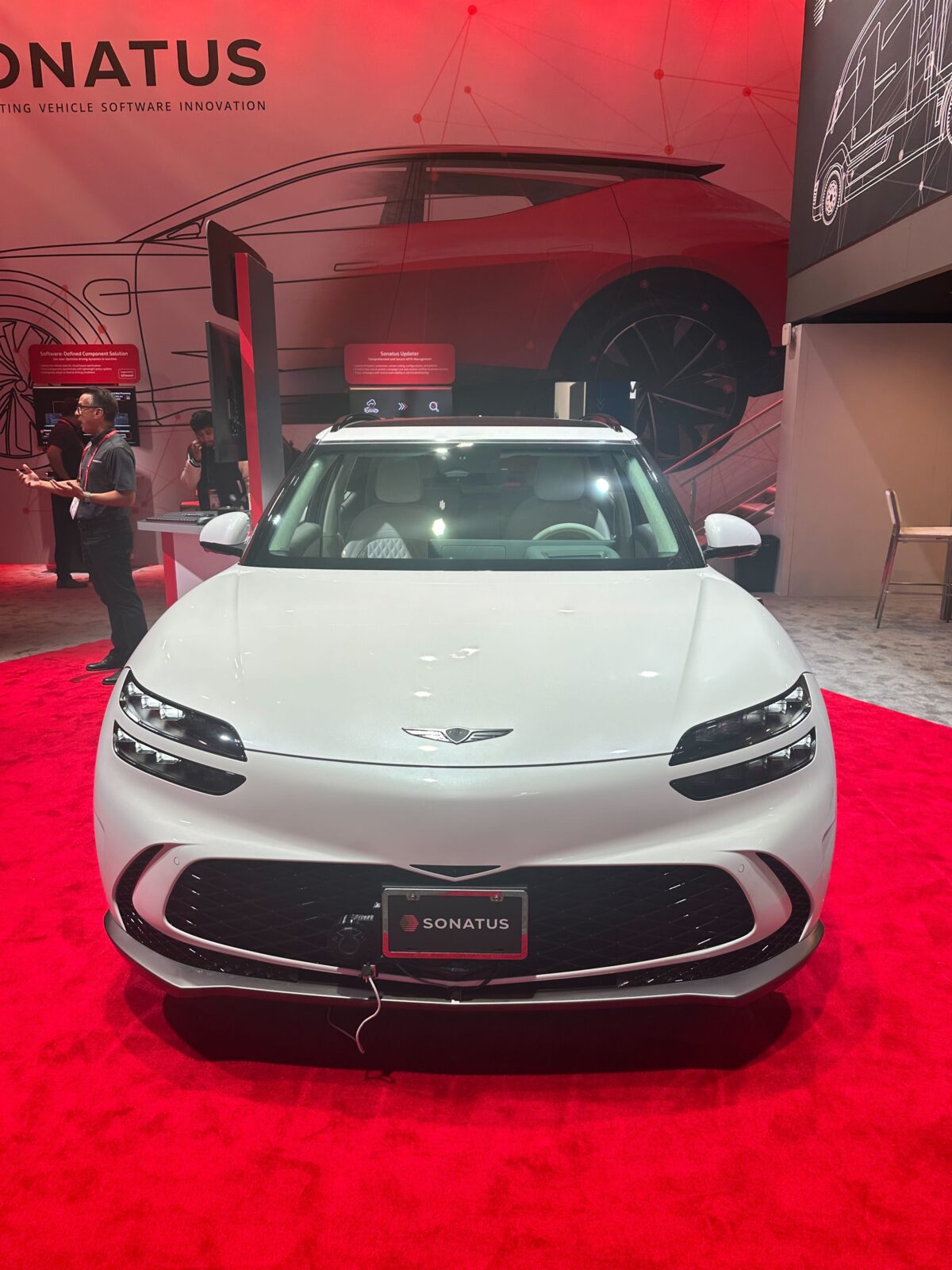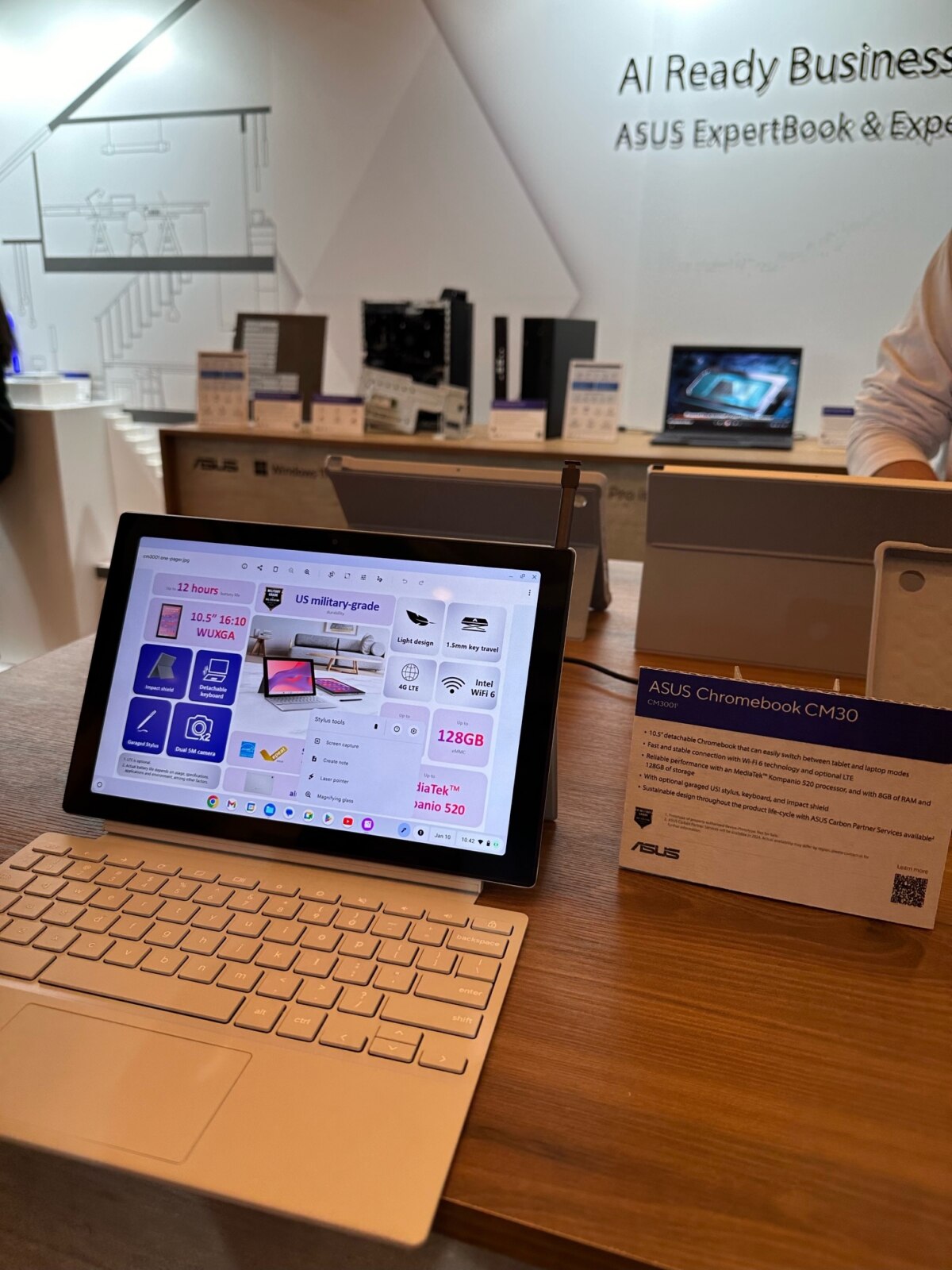World’s Biggest Consumer Tech Show Runs on Arm as AI Takes Center Stage at CES

Arm-based AI innovation across automotive, IoT and consumer tech marks on display at Las Vegas’ CES 2024
As is tradition, the start of the calendar year in tech kicks off with the Consumer Electronics Show (CES). At this year’s event, artificial intelligence (AI) took center stage, with thousands of attendees showcasing their latest AI-based tech innovations.
As Arm CEO Rene Haas said when talking with the world’s tech and business press throughout CES 2024, “you can’t run AI without Arm”. This was clearly evident throughout the show floor where it was amazing to see the range of new AI-based computing solutions and devices from our partners across automotive, IoT and consumer tech come to life.
How Will AI Change the Way We Drive in 2024 And Beyond?
As Arm’s Automotive GM Dipti Vachani said, “2024 is the year where AI will directly manifest itself in the car.” This will transform and accelerate how we all experience vehicles in the future, from new in-vehicle infotainment (IVI) designs to advanced driver assistance systems (ADAS) and autonomous features.
Just like CES 2023, many demos from Arm’s automotive partners were designed to showcase the scope and potential of AI-accelerated software-defined vehicles (SDVs). Across these automotive demos, the vital role of software was prominent, with partners highlighting a new range of innovative computing solutions for SDV use cases. These included autonomous driving, IVI through new digital cockpits and quicker, streamlined automotive development.

What Do Ambarella’s new SoCs Mean for Autonomous Driving?
Ambarella, a leader in edge AI semiconductor technology, announced the expansion of its CV3-AD automotive AI domain controller family with new systems-on-chips (SoCs), the CV3-AD635 and CV3-AD655. Both new SoCs, which are built on Arm Cortex CPU cores, aim to enhance autonomous driving and ADAS across a wide range of vehicles. Safety is absolutely paramount, with the new Arm-based SoCs targeting ASIL-B safety standards with an ASIL-D safety island included.
How is Arm Technology Used in Automotive Software Development Innovation?
Ambarella is collaborating closely with Continental, another Arm automotive partner, to deliver optimized full-stack software solutions that will benefit automotive developers. At CES 2024, Continental showcased its Continental Automotive Edge (CAEdge) that offers an automotive development environment for the far quicker implementation of software and big data solutions for SDVs. CAEdge also features a HPC development kit that is built on the Arm Cortex-A53 and Cortex-X2 CPUs.
Elsewhere, Green Hills Software showcased eight connected electronic control units (ECUs) built on the Arm Cortex-A, M and R range of CPU processors that all run the foundational software for SDVs. The demos highlighted how these ECUs enable over-the-air (OTA) software updates and advanced debugging for automotive developers – both vital components and features for future SDVs. Sonatus also demonstrated its own software solutions for in-vehicle personalization and fleet management through Arm-based ECUs in silicon from NXP, Marvell, Broadcom and others.

How Will Next-Gen Digital Cockpit Look Like?
Elektrobit presented its Next-Gen Digital Cockpit, which features a curved-screen display built for a new, more immersive in-vehicle experience powered by the Unreal Engine and Android Automotive. All of this is built on Arm-based SoCs and automotive microcontrollers (MCUs) to deliver the high performance, low power required for future in-vehicle cockpit experiences.
For developers looking to target these future digital cockpits, Panasonic Automotive showcased its cloud-native, multi-display control technology called “Unified HMI.” This open-source technology enables the design, development, and testing of cockpit HMI across multiple displays, without depending on underlying hardware architectures. This empowers developers to rapidly and efficiently create innovative cockpit UI concepts to usher in a new era of software-defined digital cockpit solutions.
How Are SOAFEE-Based Architectures Revolutionizing the Automotive Industry?
At CES 2024, a range of successful SOAFEE-based architecture implementations were demoed. AWS continued to showcase its latest SOAFEE-based cloud services and solutions that are purpose built for automotive-based development in the cloud. Tier IV demonstrated its SOAFEE-based Autoware AD Kit for the cloud-native development of autonomous driving software on its Web. Auto Platform. This was shown through an Ampere processor built on the Arm Neoverse N1 platform. Finally, new SOAFEE member Tata Technologies showcased its SOAFEE-based cloud-native software architecture through a variety of automotive software workloads on Arm-based AWS EC2 Graviton instances and the NXP S32G3 board.
However, CES 2024 was not just about innovative SOAFEE technology solutions, with a new SDV Alliance unveiled which is described as a “collaboration of collaborations” between AUTOSAR, COVERSA, Eclipse SDV and SOAFEE. The main purpose of the SDV Alliance is to align efforts in the SDV ecosystem, with the collaboration helping to clarify the contributions that each consortium brings to SDVs and how they can all actively work together.
What Role Does Arm Technology Play in the Latest DTV Innovations?
While CES always showcases the latest and greatest products across all corners of consumer computing, this year truly highlighted the ongoing evolution of the DTV.
LG is seen as a leader in the premium DTV market, with its new OLED TVs showcased at CES 2024 being great examples of significant leaps forward in TV performance. This is made possible by a brand-new compute platform built on Arm Cortex-A78 CPU and Mali-G510 GPU that delivers better responsiveness and an improved UI quality. This is enabling a variety of new DTV features and use cases, from body tracking and fitness applications for home workouts to new AI workloads, like voice activated control in the LG TV UI that recognizes the user and then provides relevant content built around their preferences.

As part of LG’s leading-edge range of OLED TVs, the real showstopper product was its new transparent TV. The wireless, 4k, 77-inch TV, which is built on Arm technology, is designed to stand in the middle of a room, with the option for users to keep it see-through while playing content or turning it opaque like a traditional TV screen. This is set to redefine the TV viewing experience in the future.
Meanwhile, Samsung, another leader in the premium DTV market, demonstrated how the TV will become the center of the smart home experience, with its Now+ service that incorporates smart home controls into the TV’s interface. This not only gives the users control over a variety of smart home applications, like heating, lighting and security, but also connects with the smartphone so the device can be used as a remote control. This demonstrates true integration across all connected devices in the new smart home, which is made possible by Matter, the standard protocol for controlling and connecting devices.
What Mobile Innovations were Unveiled at CES 2024?
Despite not being the usual launchpad for mobile, it was interesting to see the latest innovations on display at CES 2024. These included the launch of brand-new smartphone devices and innovative new form factors.
1. New smartphones
At CES 2024, ASUS Republic of Gamers (ROG) unveiled its new ROG Phone 8 Series. Traditionally targeted for premium mobile gaming experiences, the new series of smartphones, which are built on the latest Arm Cortex-X4, Cortex-A720 and Cortex-A520 CPUs, aim to “go beyond gaming” with a slimmer, lighter form factor for all power users, not just committed gamers. The new ROG Phone 8 Series also features a new AI-based camera and AI-enhanced features, like noise cancelling for voice and video calls and an AI-based wallpaper generator.
2. Form factor innovation
Samsung demonstrated its new Flex In and Out Flip concept device that can be folded in both directions. This marks a change in flip devices on the market today, like the Arm-powered Galaxy Z Flip 5, as it can be folded completely backwards. The concept served to demonstrate the potential of new form factors for smartphone devices.

Away from smartphones, ASUS unveiled its new CM30 Detachable Chromebook, which has a versatile 2-in-1 design so users can switch between laptop and tablet form factors. Built on MediaTek’s Kompanio 520 chipset, which features 2x Arm Cortex-A76 and 6x Cortex-A55 CPU cores alongside the Arm Mali-G52 GPU, the device is designed to give users flexibility as they move seamlessly between work productivity and entertainment tasks.
What Arm-based AI Innovations Were Showcased at CES 2024?
At CES 2024, it was interesting to hear attendees talk about the enormous potential of AI at the edge, with this being singled out as a key growth area in the year ahead. Across the show floor, it was impressive seeing the range of IoT products from Arm partners already displaying advanced edge AI capabilities.
Alif Semiconductor unveiled its latest edge AI and ultra-low power computing products for a variety of AI use cases, including presence and face detection, natural language processing and gesture detection. These were showcased part of demos for the Ensemble family of microcontrollers (MCUs) and fusion processors, which are the first products in the market to feature the Arm Cortex-M55, Ethos-U55, and Cortex-A32 processor technologies combined.

Himax also demonstrated its ultra-low AI processor, which is targeted for real-time and high frame rate 3D hand tracking and gesture control. Built on Arm Cortex-M55 and Ethos-U55, as well as including Arm Helium extensions for certain AI acceleration duties, the processor brings AI and machine learning (ML) to new types of endpoints and IoT products.
Finally, Aizip brought six Arm-based new AI models to CES 2024, including defect detection, preventive maintenance, baby-crying detection, glass breaking detection, SpeakerID, and person-access-system. These all run on devices from Renesas, Analog Devices, and Silicon Labs that adopt a broad range of Arm Cortex-M processors, including Arm Cortex-M4, Cortex-M33, and Cortex-M85. Arm-GCC compiler and CMSIS-5 Runtime Library were also used in the model development.
Las Vegas’ CES 2024 ran on Arm
With 70 percent of the world’s global population using Arm-based products, many of the latest technology releases showcased at CES 2024 will have run on Arm, which is the most ubiquitous computing platform on the planet.
All of this means that Arm sits at the center of AI innovation now and in the future, with CES highlighting the range of new AI-based computing solutions and devices that use Arm as the foundational technology.
This sets the scene for the year ahead where Arm will continue to be at the heart of AI innovations that are transforming the global technology landscape.
Any re-use permitted for informational and non-commercial or personal use only.











